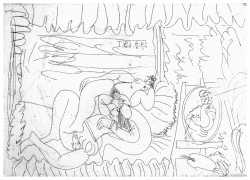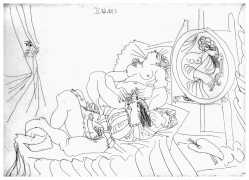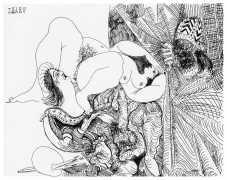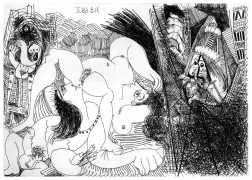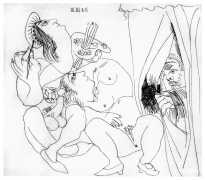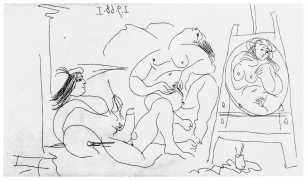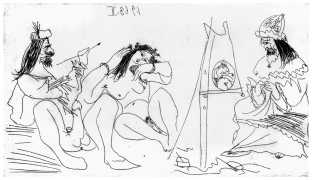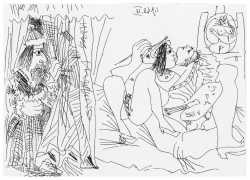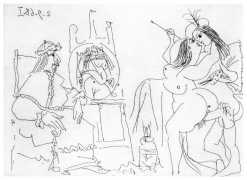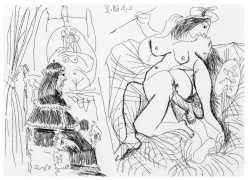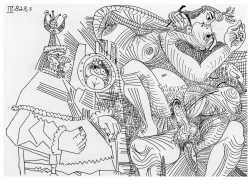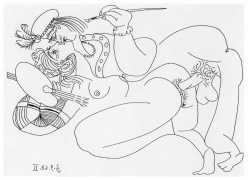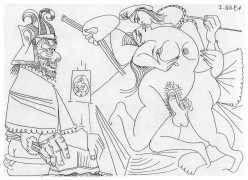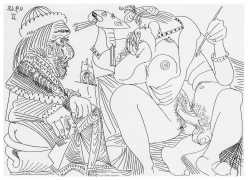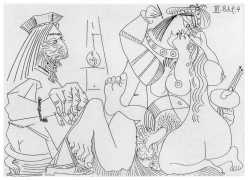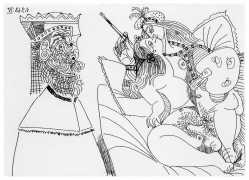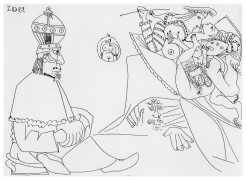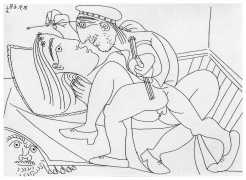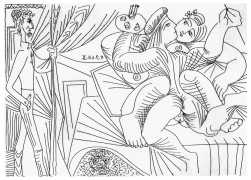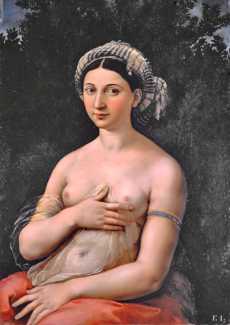
When thinking and discussing the artists of the Renaissance, Raphael is undoubtedly set apart by his enduring reputation as an insatiable lover of women. The first art historian, Giorgio Vasari, who was alive at the same time of many of the artists he discussed, focused on it, writing in his Lives of the Artists ‘Raphael was a very amorous person and very affectionate to women, whom he was always ready to serve.’ Vasari also writes of the legendary cause of Raphael’s death – that he was killed by overenthusiastic lovemaking: ‘Keeping on like this in his amorous pleasures, having one time debauched himself more than usual, he returned home in an extreme fever from which he died.’ He reportedly left money on his deathbed for his mistress, so that she could live a comfortable life.
That mistress was known as La Fornarina, and we know her from a 1518 painting by Raphael, which shows an undeniably beautiful dark-haired, pink-cheeked and soft-skinned woman, holding a veil up to protect her modesty, looking to the artist as she proudly wears a band around her arm with his name. La Fornarina translates as ‘the baker’s daughter’, who was probably one Margherita Luti. The Fornarina story was clearly an inspiration for other later artists, including Turner, Ingres – and Picasso.
Picasso’s twelve Raphaël et la Fornarina etchings are part of the 347 suite, which you can read more about here. Picasso was a lifelong admirer of Raphael’s paintings, and the Renassance master’s reputation for sensual gratification clearly struck a loud chord for him.
Raphaël et la Fornarina was published by Galerie L. Leiris, Paris, in a limited numbered and signed edition of 50 copies.


